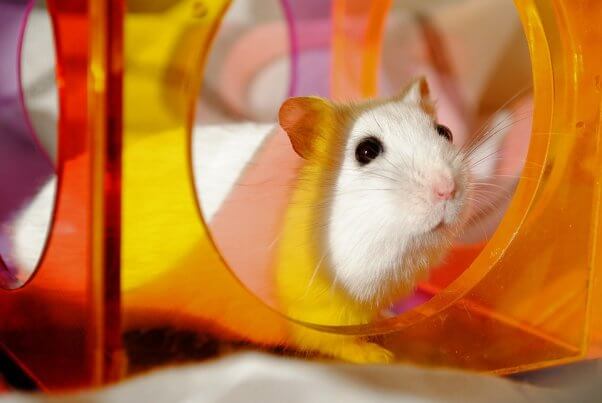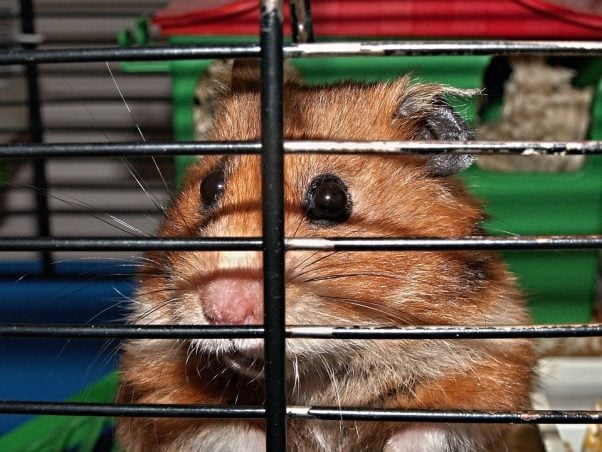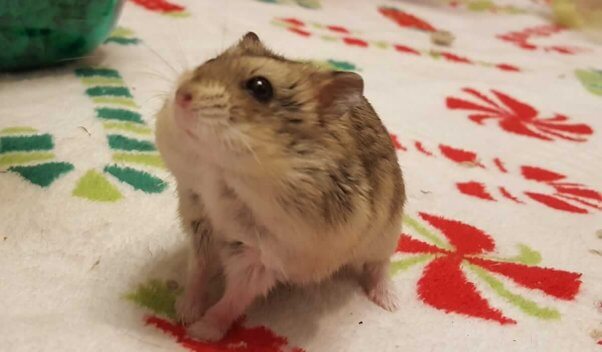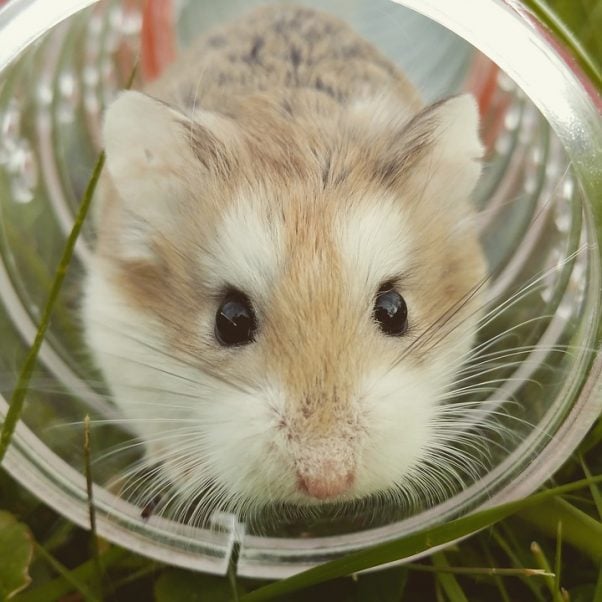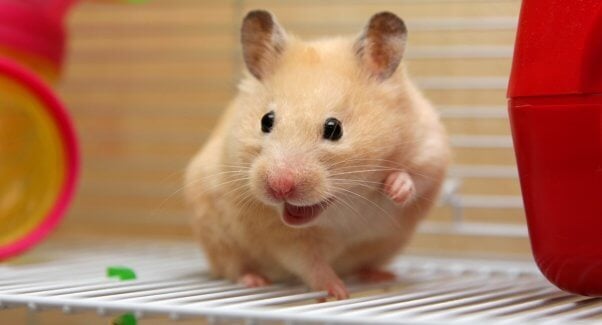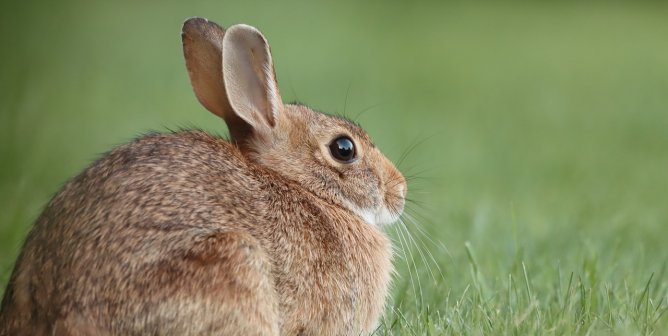Hamsters are sometimes referred to as “starter pets,” a harmful characterization that implies that they have less worth and fewer needs than other animals and can be used as a “learning experience” for children grappling with responsibility for the first time. This mindset is an example of speciesism, the misguided belief that one species is more important than another. Hamsters are just as worthy of respect as you, a dog, or a tiger, and they have specific needs just like the rest of us. There is no such thing as a “starter pet.”
Hamsters are timid and don’t like loud or frightening noises, so a calm, quiet environment is essential to their well-being. They have distinct personalities just as all animals do, and many take a long time to adjust to being picked up and held by humans. A hamster who doesn’t want to be held may stand on their hind legs, show their teeth, hiss, chatter, or bite, and their bites can be painful. If a startled guardian drops a hamster, the fall—even from just a few inches above the ground—can cause serious injuries. Children likely won’t have the patience to earn a hamster’s trust slowly and aren’t equipped to provide the level of care that these sensitive animals require.
If you’re thinking about adding a hamster to your family or are already caring for one, here are some important things to consider:
1. When You Buy a Hamster, You’re Supporting Cruel Breeding Factories
A routine inspection by the U.S. Department of Agriculture revealed that one PetSmart supplier reportedly allowed severely stressed hamsters to eat one another and left the remains of the deceased animals in cages.
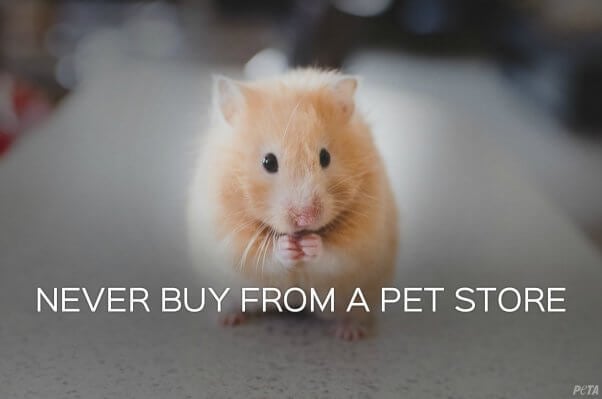
When you buy from pet stores that sell animals, you’re supporting places like this horrendous dealer, which supplies animals to hundreds of pet stores across the U.S. To learn more, visit PETA’s investigation page.
Plus, breeding animals to be kept as “pets” has created a homeless-animal crisis: Millions of unwanted animals are euthanized every year for lack of good homes. Never buy from stores, and always adopt animals who are desperately waiting in shelters for a new life.
2. Hamsters Need Large, Secure Homes
Hamsters can be viewed by other animals as prey and may be in danger of getting harmed or killed by other companion animals in the home if proper precautions aren’t taken. To help prevent animal companions from harming one another, it’s imperative that hamsters have a safe, spacious, and sturdy enclosure to call home.
Cages sold at pet stores are woefully inadequate to meet a hamster’s unique needs. If an enclosure is too small, the animal can develop “cage rage,” a condition caused by mental distress. That can lead to various behavioral issues, including biting, excessive urinating, and incessant cage-bar biting that can cause serious harm to their teeth. Large hamsters should have a minimum of 800 square inches of floor space, and dwarf hamsters should have at least 640. Because few commercially available cages meet these recommendations, we suggest building your own hamster enclosure. If you’re unable to create your own, another option is a 75-gallon (or larger) aquarium with a fitted mesh lid. Hamsters love to explore, so a larger space will make your hamster happier and healthier.
Make sure any barred cage doesn’t have spaces larger than half an inch (for large hamsters) or a quarter-inch (for dwarf hamsters), as they could squeeze through. Hamsters are talented escape artists who also have the ability to flatten their bodies, and they can fit through very small holes and crevices. They are easily lost and can be difficult to find, and may be injured or killed while on the loose.
3. It Can Be Difficult to Find a Veterinarian for Your Hamster
A hamster is considered an “exotic animal” and must be seen by a specialized veterinarian. Many people don’t know this, and when their hamster becomes ill, they are not able to find an appropriate veterinarian in their area, thereby delaying treatment. When a guardian finally does find a vet who sees “exotic” animals, they are often farther away and very costly.
Despite the difficulties, hamsters must always receive timely care when they appear ill in addition to regular, routine check-ups. As prey animals, they hide signs of injury or illness, so when guardians notice that something seems wrong, the condition is often advanced. Hamsters are highly susceptible to “wet tail,” a bacterial infection of the intestines. It’s difficult to treat and frequently fatal in 48 hours after the onset of symptoms. Cancerous tumors are also common, as are bladder stones, parasitic infections, salmonellosis, abscesses, and overgrown teeth. Guardians must be vigilant to monitor the animal’s weight, appetite, appearance, and energy level and to catch small changes that could indicate a larger issue.
4. Hamster Balls and Wheels Are Not All Fun and Games
While hamsters need to be able to play and explore, the well-known hamster toys, the hamster ball and wheel, aren’t designed with the animal’s well-being in mind. Both toys are often made too small, causing hamsters to arch their back unnaturally. Shopping for a wheel with a diameter of at least 11 inches (8 inches for a dwarf hamster) may mean buying something marketed for rats, but it will be better for a hamster’s physical well-being and can provide great mental and physical stimulation.
Unlike a hamster wheel, which provides a hamster with a safe place to exercise when the correct size is used, a hamster ball is not recommended. Hamsters are easily frightened, because they don’t have the best eyesight, and they use their whiskers to navigate. A hamster separated from sensory information, as in one of these balls, is a disoriented animal—and what is often perceived by humans as enjoyment is more than likely a panic response. Additionally, hamsters’ legs can become caught in a ball’s air holes, leading to broken bones. Instead of a ball, consider a playpen or hamster-proof a room and allow your hamster to exercise in it under your diligent supervision.
5. A Lone Hamster Is a Happy Hamster
While many animals need friends and companionship, hamsters prefer solitude. Some can bond with a human guardian, but they should not live with another hamster. These animals defend their own territories vigorously and will likely fight. Dwarf hamsters, including members of the Roborovski, Russian, and Chinese species, can live with a companion if introduced at a young enough age, but disagreements and fights can still occur no matter how long they’ve coexisted. Instead of adopting another hamster to keep yours company, be your hamster’s best friend—spend time observing and talking to them and enriching their environment with stimulating activities. Since they don’t usually like to be handled, only hold them to bond and to perform a physical assessment if they are awake, appear unafraid, and are comfortable with you doing so.
6. Hamsters Need Special Bedding and Nesting Materials
There are several options for affordable and safe bedding to give your hamster the comfortable home they desire and deserve. However, it’s important to know what’s safe, as even packaging for dangerous bedding, such as pine or cedar shavings, may have a cute photo of a hamster on the label at a pet store. Cat litter, newspaper, and “fluff” bedding can also cause life-threatening ailments for your hamster and should be avoided. Aspen shavings, paper bedding, and hemp are all acceptable choices and can even be mixed together in a hamster’s enclosure. Your animal will also appreciate a small container of sand to bathe in.
Bedding depth should be a minimum of 8 and 12 inches. Hamsters will naturally urinate and defecate in a specific spot, and that area should be cleaned weekly. All the bedding should be replaced every six months or so, but a handful of used bedding should be retained to help the hamster feel secure.
7. Hamsters Have a Sleeping Schedule
Hamsters in captivity are active mostly from dusk to dawn and spend the majority of the daytime in their nest. This can be frustrating for a guardian who wants to play with their companion during daytime hours. Waking a sleeping hamster not only deprives them of critical rest but also can be stressful for them and can prompt them to act nervously or aggressively. There are valid reasons to wake a sleeping hamster, just as there are reasons to wake a sleeping human, such as to administer medicine or alter something potentially hazardous in their environment. Just wake them with care and caution!
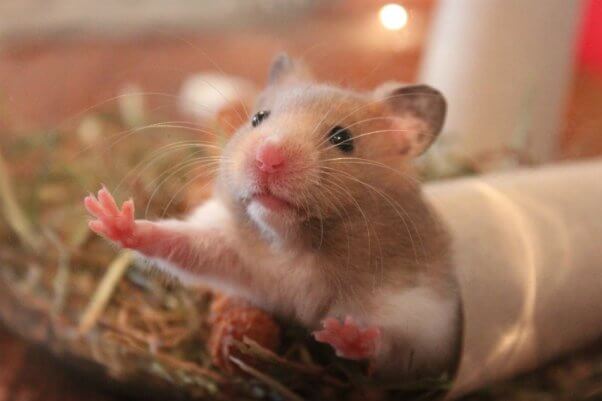
8. Hamsters Have a Specific Diet
The bulk of a hamster’s diet should be store-bought pellets designed specifically for them (rotating among brands for variety). The pellets can be scattered in their bedding or provided in a bowl. Most nuts, fresh fruits, and vegetables can be offered as treats but only in very small portions—typically, no more than a quarter teaspoon two or three times per week. Any uneaten morsels should be removed before they start to rot or attract flies, unwelcome guests in your hamster’s home. Since hamsters are omnivorous, they’ll also appreciate occasional treats of dried mealworms or other insects. Hamster teeth never stop growing, so it’s imperative that you provide hamsters with hard, digestible items that they can chew to keep their teeth from getting too long, such as dog biscuits (the dog-chew brand Whimzees is very popular for this purpose) and portions of nontoxic tree branches, like organic apple or pear branches.
9. Hamsters Need Mature, Experienced Guardians
Although hamsters are small, they still entail a big commitment. They require even more daily care and attention than other animal companions who don’t hide signs of illness or injury. Guardians must be willing to provide for their unique (and often expensive) needs and be prepared to dash to the vet at a moment’s notice. How can you help hamsters? Respect them as individuals and never treat them as “starter pets” for children to “learn on.” Please also never buy an animal from a pet store, and tell friends and family not to, either. Shelters and rescues are full of wonderful animals of all species in need of devoted caregivers.


